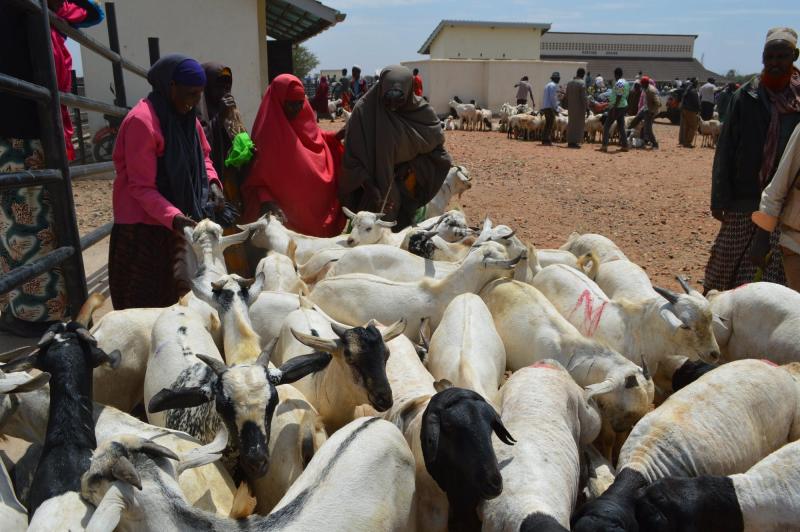Dossiers
What’s #Trending in Pastoralist Kenya?
This blog explores SPARC research into social media trends in pastoralist Kenya and gives a sense of social media’s potential for civic participation, e-commerce and community resilience in drylands.
Éditeur The Elephant

Women with a herd of goats
Credit Image by CLI-MARK Kenya/ CTA-ACP EU - CC BY-SA 2.0
You may be familiar with the common myths about drylands—that they contribute little to biodiversity and food systems, that they are unproductive and unworthy of political and economic investment, and their inhabitants are most responsible for this degradation. In the last thirty years, scholars, activists, and other actors have offered comprehensive counter-arguments and counter-narratives to these misconceptions. Here are a few facts: nearly half of the African continent is comprised of drylands ecosystems; twenty million pastoralists and agro-pastoralists live in the drylands of the Horn of Africa; in Kenya, arid and semi-arid lands are 80 per cent of the country’s landmass, inhabited by nearly ten million people. Researchers show that traditional pastoralism is likely one of the most adaptive productive strategies for Africa’s rangelands. There is much to learn from the flexibility and innovation of the resource-efficient communities that are sustaining pastoralism as a resilient livelihood.
Still, vulnerability in the drylands is rising. This is due to a complex mix of factors, including climate change and the economic fallout from COVID-19. Disruptions to the food supply chain together with continued drought—likely the worst in 40 years—are putting lives and livelihoods at risk. In Kenya, the World Food Programme has warned that half a million people are currently on the brink of a hunger crisis, and the number of Kenyans requiring assistance has quadrupled in two years. As governments, community leaders, and humanitarian agencies respond to urgent crises, we must resist longer-term proposals solely predicated upon sedentarization. The agro-centric and teleological perceptions informing these “solutions” are at best incomplete, and destructive at worst.
Such a narrow view of pastoralist systems obfuscates the sophisticated social technology which undergirds them. Pastoralism’s core capability of “boosting and amplifying process variance with real-time management strategies and options” enables pastoralists—Emery Roe’s pithy “reliability professionals”—to identify and test new ways to sustain livelihoods uniquely well in contexts of high uncertainty. The system behind such rapid feedback loops of identifying, assimilating and responding to variability and risk is radical. When the source and paths of uncertainty are inconceivable and resulting changes incommensurate— in other words, when even the illusion of prediction and control is impossible— then coping reactively is a moot option. Settled societies would do well to apprentice with pastoralists on “coping ahead”.
Continue reading the full article on the 'The Elephant'.